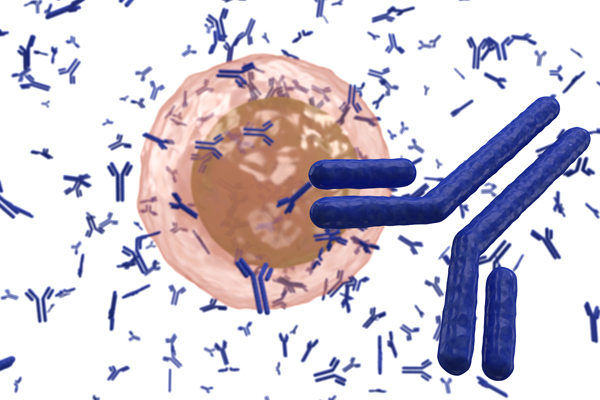Screening for Antibodies by Phage Display
Available Across the United States
Phage display is a very powerful technology for the discovery of protein interactions that uses bacteriophages (viruses that infect bacteria) to connect large libraries of proteins with the genetic information that can be used to express them. In this approach, a gene encoding a protein of interest is inserted into a phage coat protein gene, causing the phage to "display" the protein on its surface while the gene for the protein is inside, resulting in a connection between the protein and the DNA sequence that encodes it.
These displaying phages can then be screened against other proteins or various targets in order to detect interactions between the displayed protein and other molecules. In this way, large libraries of proteins can be screened and amplified in a high-throughput process called in vitro panning or screening.
More About Antibody Phage Display Panning
George Smith at the University of Missouri pioneered using phage display to select high-affinity peptide binders in the mid-1980s. Since then, antibody phage display panning has allowed these antibodies to become one of the most widely used and versatile tools for antibody discovery and engineering.
In 2002, adalimumab (Humira®) became the first approved phage display-approved therapeutic antibody on the market and remains one of the best-selling antibodies in the world. Six marketed antibodies were discovered or optimized by phage display, and many more are in clinical development. This approach has revolutionized the way researchers can discover antibodies and other binding molecules for use as therapeutics, diagnostics and research reagents.
Advantages of Antibodies & Scaffold-Based Binders
There are many advantages to selecting antibodies and scaffold-based binders. These include:
- Preferential on/off rates
- Specificity for one family member antigen
- Can be used with non-immunogenic or toxin-like targets
- Allows you to "discover the needle in a haystack"
- Creates a custom phage library
The power of in vitro selection allows for selecting high-affinity binders, preferential on/off rates, specificity for one family member antigen from related molecules, antibodies targeted to a specific epitope, and other conditions that may be advantageous to the properties of the binder (stability, gentle elution, metal ion dependency, etc.).
In vitro, selection does not depend on the development of an in vivo immune response and thus can be used with non-immunogenic or toxin-like targets, as well as other molecules that may be unsuitable for immunization. However, combining it with an immunization approach creates an even more powerful strategy since the antibodies have undergone an in vivo maturation process.
"Panning" an immunized phage display library, provides the ability to discover the needle in the haystack—as long as you can develop a good selection strategy, you can sort through the billions of antibodies to find those with the unique desired properties.
Unlike traditional monoclonal antibodies, you choose from a very high diversity of molecules. You will have a recombinant clone of the antibody which facilitates production, manufacturing, and reproducibility and the ability to engineer the antibody into different formats and with different tags for detection and purification.
Choose Our Phage Display Panning Services
Biomolecular Discovery Services can create and screen custom phage libraries from various sources - human or animal PBMCs, other naive antibody sources, scaffold proteins and immunized animals (such camelids, mice, rabbits, sheep, rats). Our team is experienced in this process, offering years of knowledge. We are equipped to complete detailed phage display panning with these libraries, helping you wield a lot of information.

Learn More About Our Phage Display Panning Services
Contact Biomolecular Discovery Services for more information about our phage display panning services. We'll be happy to answer any questions you may have and to get started working with you.
